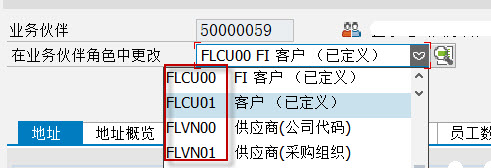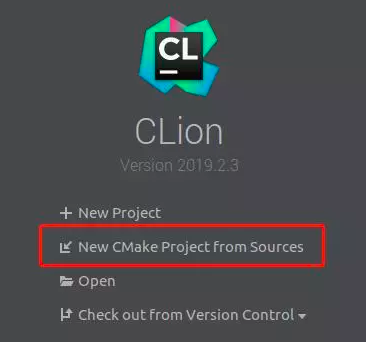Spring Boot全局异常处理
Spring Boot默认启动的时候会注入一个专门处理异常的自动配置类:
@Configuration@ConditionalOnWebApplication(type = Type.SERVLET)@ConditionalOnClass({ Servlet.class, DispatcherServlet.class })// Load before the main WebMvcAutoConfiguration so that the error View is available@AutoConfigureBefore(WebMvcAutoConfiguration.class)@EnableConfigurationProperties({ ServerProperties.class, ResourceProperties.class })public class ErrorMvcAutoConfiguration {private final ServerProperties serverProperties;private final List<ErrorViewResolver> errorViewResolvers;public ErrorMvcAutoConfiguration(ServerProperties serverProperties,ObjectProvider<List<ErrorViewResolver>> errorViewResolversProvider) {this.serverProperties = serverProperties;this.errorViewResolvers = errorViewResolversProvider.getIfAvailable();}@Bean@ConditionalOnMissingBean(value = ErrorAttributes.class, search = SearchStrategy.CURRENT)public DefaultErrorAttributes errorAttributes() {return new DefaultErrorAttributes(this.serverProperties.getError().isIncludeException());}@Bean@ConditionalOnMissingBean(value = ErrorController.class, search = SearchStrategy.CURRENT)public BasicErrorController basicErrorController(ErrorAttributes errorAttributes) {return new BasicErrorController(errorAttributes, this.serverProperties.getError(),this.errorViewResolvers);}//.................}
查看源码发现其会注入一个默认的BasicErrorController来处理异常,所以主要看这个Controller:
@Controller@RequestMapping("${server.error.path:${error.path:/error}}")public class BasicErrorController extends AbstractErrorController {@RequestMapping(produces = "text/html")public ModelAndView errorHtml(HttpServletRequest request,HttpServletResponse response) {HttpStatus status = getStatus(request);Map<String, Object> model = Collections.unmodifiableMap(getErrorAttributes(request, isIncludeStackTrace(request, MediaType.TEXT_HTML)));response.setStatus(status.value());ModelAndView modelAndView = resolveErrorView(request, response, status, model);return (modelAndView == null ? new ModelAndView("error", model) : modelAndView);}@RequestMapping@ResponseBodypublic ResponseEntity<Map<String, Object>> error(HttpServletRequest request) {Map<String, Object> body = getErrorAttributes(request,isIncludeStackTrace(request, MediaType.ALL));HttpStatus status = getStatus(request);return new ResponseEntity<>(body, status);}}
这里根据返回类型不同分为了两个方法,errorHtml方法返回ModelAndView,error方法返回ResponseEntity,熟悉SpringMvc的同学应该对这两个类不陌生。其中errorHtml方法中的resolveErrorView方法由父类实现:
public abstract class AbstractErrorController implements ErrorController {private final ErrorAttributes errorAttributes;private final List<ErrorViewResolver> errorViewResolvers;protected ModelAndView resolveErrorView(HttpServletRequest request,HttpServletResponse response, HttpStatus status, Map<String, Object> model) {for (ErrorViewResolver resolver : this.errorViewResolvers) {ModelAndView modelAndView = resolver.resolveErrorView(request, status, model);if (modelAndView != null) {return modelAndView;}}return null;}}
这里具体是由ErrorViewResolver去处理的,这里当SpringBoot启动的时候会自动装载一个默认的ErrorViewResolver进来,其还实现了Ordered接口,优先级最低,如下:
public class DefaultErrorViewResolver implements ErrorViewResolver, Ordered {private static final Map<Series, String> SERIES_VIEWS;static {Map<Series, String> views = new EnumMap<>(Series.class);views.put(Series.CLIENT_ERROR, "4xx");views.put(Series.SERVER_ERROR, "5xx");SERIES_VIEWS = Collections.unmodifiableMap(views);}private ApplicationContext applicationContext;private final ResourceProperties resourceProperties;private final TemplateAvailabilityProviders templateAvailabilityProviders;private int order = Ordered.LOWEST_PRECEDENCE;@Overridepublic ModelAndView resolveErrorView(HttpServletRequest request, HttpStatus status,Map<String, Object> model) {ModelAndView modelAndView = resolve(String.valueOf(status), model);if (modelAndView == null && SERIES_VIEWS.containsKey(status.series())) {modelAndView = resolve(SERIES_VIEWS.get(status.series()), model);}return modelAndView;}private ModelAndView resolve(String viewName, Map<String, Object> model) {String errorViewName = "error/" + viewName;TemplateAvailabilityProvider provider = this.templateAvailabilityProviders.getProvider(errorViewName, this.applicationContext);if (provider != null) {return new ModelAndView(errorViewName, model);}return resolveResource(errorViewName, model);}private ModelAndView resolveResource(String viewName, Map<String, Object> model) {for (String location : this.resourceProperties.getStaticLocations()) {try {Resource resource = this.applicationContext.getResource(location);resource = resource.createRelative(viewName + ".html");if (resource.exists()) {return new ModelAndView(new HtmlResourceView(resource), model);}}catch (Exception ex) {}}return null;}}
ResourceProperties中包含了默认的四个静态资源路径:
@ConfigurationProperties(prefix = "spring.resources", ignoreUnknownFields = false)public class ResourceProperties {private static final String[] CLASSPATH_RESOURCE_LOCATIONS = {"classpath:/META-INF/resources/", "classpath:/resources/","classpath:/static/", "classpath:/public/" };/*** Locations of static resources. Defaults to classpath:[/META-INF/resources/,* /resources/, /static/, /public/].*/private String[] staticLocations = CLASSPATH_RESOURCE_LOCATIONS;}
所以分析源码可以发现,SpringBoot会依次从”classpath:/META-INF/resources/“, “classpath:/resources/“,”classpath:/static/“, “classpath:/public/“这四个目录下面寻找是否存在error目录,然后根据错误码errorCode去寻找具体的errorCode.html页面,如果找到则构造成ModelAndView对象返回,我们可以通过添加自定义ErrorViewResolver可以构造自己的异常目录:
@Componentpublic class CustomErrorViewResolver implements ErrorViewResolver,Ordered,ApplicationContextAware {private final String CUSTOM_RESOURCE_LOCATION = "classpath:/static/custom_error/";private ApplicationContext applicationContext;@Overridepublic int getOrder() {return 0;}/*** 返回null的时候会由后续的ErrorViewResolver去解析* @see org.springframework.boot.autoconfigure.web.servlet.error.AbstractErrorController#resolveErrorView(HttpServletRequest, HttpServletResponse, HttpStatus, Map)* @param request* @param status* @param model* @return*/@Overridepublic ModelAndView resolveErrorView(HttpServletRequest request, HttpStatus status, Map<String, Object> model) {if(status.equals(HttpStatus.INTERNAL_SERVER_ERROR)){try {Resource resource = this.applicationContext.getResource(CUSTOM_RESOURCE_LOCATION);resource = resource.createRelative(String.valueOf(status) + ".html");if (resource.exists()) {return new ModelAndView(new HtmlResourceView(resource), model);}} catch (IOException e) {e.printStackTrace();}}return null;}@Overridepublic void setApplicationContext(ApplicationContext applicationContext) throws BeansException {this.applicationContext = applicationContext;}class HtmlResourceView implements View {private Resource resource;HtmlResourceView(Resource resource) {this.resource = resource;}@Overridepublic String getContentType() {return MediaType.TEXT_HTML_VALUE;}@Overridepublic void render(Map<String, ?> model, HttpServletRequest request,HttpServletResponse response) throws Exception {response.setContentType(getContentType());FileCopyUtils.copy(this.resource.getInputStream(),response.getOutputStream());}}}
还可以使用常规的Spring MVC特性,比如@ExceptionHandler方法和@ControllerAdvice解析需要处理的异常。其他未处理的异常由ErrorController来解析。
@ControllerAdvicepublic class CustomControllerAdvice extends ResponseEntityExceptionHandler {@ExceptionHandler(CustomException.class)@ResponseBodyResponseEntity<?> handleControllerException(HttpServletRequest request, Throwable ex) {HttpStatus status = getStatus(request);Map<String, Object> map = new HashMap<>();map.put("status",status.value());map.put("msg",ex.getMessage());return new ResponseEntity<>(map, status);}private HttpStatus getStatus(HttpServletRequest request) {Integer statusCode = (Integer) request.getAttribute("javax.servlet.error.status_code");if (statusCode == null) {return HttpStatus.INTERNAL_SERVER_ERROR;}return HttpStatus.valueOf(statusCode);}}
官方文档:Spring Boot Error Handling



































还没有评论,来说两句吧...